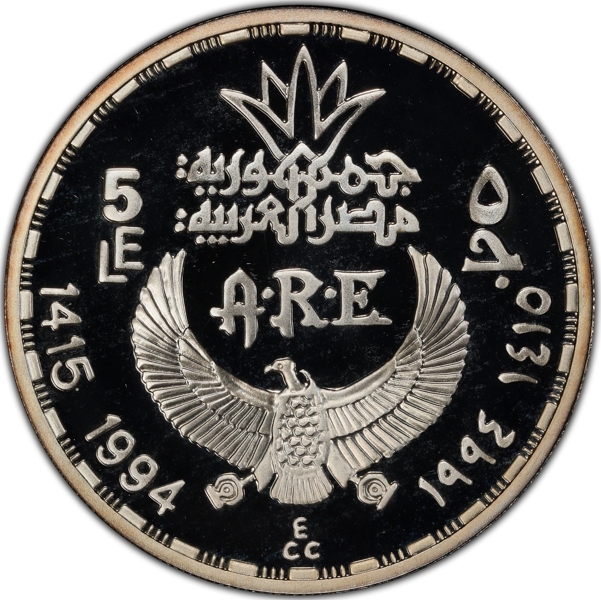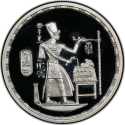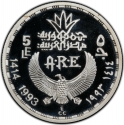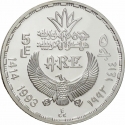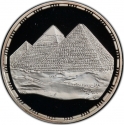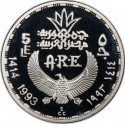You are about to finish your registration. Please check your mailbox (including spam folder). There should be a letter with a confirmation link. Check setting to make sure that your e-mail address is correct.
Send letter againDescription
Sobek (also called Sobki) was an ancient Egyptian deity with a complex and elastic history and nature. He is associated with the Nile crocodile or the West African crocodile and is represented either in its form or as a human with a crocodile head. Sobek was also associated with pharaonic power, fertility, and military prowess, but served additionally as a protective deity with apotropaic qualities, invoked especially for protection against the dangers presented by the Nile. Sobek has been famed for having been revered by the first female Pharao by the Nebty name Sat-Sekhem-Nebet-Tawy Sobekneferu, present both in the female Pharao's nomen, Sobek'Neferu (sbk-nfrw - Beauty of Sobek), and her praenomen Ka'Sobek'Re (The Ka of Sobek-Ra).
Obverse

|
Depicts walking god Sobek. |
|---|---|
Reverse

|
Stylized state name (Arab Republic of Egypt) divides denomination in Arabic and English and abbreviation of state name (A.R.E.) below, the date in Arabic (Hijri) and Western (Georgian) divides by a vulture with open wings. Engraver's initials (ECC) below. 5 ٥ جمهورية مصر العربية |
| Edge |

